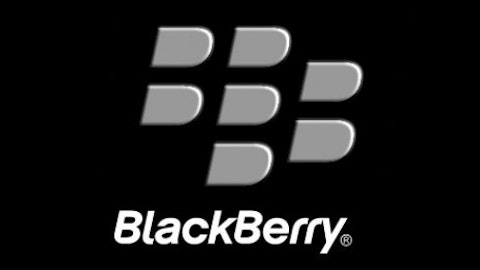Fans of HBO’s Game of Thrones who are still recovering from last week’s action-packed penultimate episode still get one more episode before the season closes out. The season finale of Game of Thrones airs tonight on HBO, closing out a season that’s been not only a smashing critical success, but also a commercial one.
The reactions from fans after last week’s shocking episode — and the coverage across the media — shows what a cultural phenomenon Game of Thrones has become. Figures released from HBO put Game of Thrones as having the second largest total audience among all of its original programming, behind only The Sopranos, a show that The Writers Guild of America has honored as being the best written television show ever.
With Game of Thrones wrapping up another triumphant season, let’s review the smashing success of the series and what it says about the direction television is headed.

HBO’s next great success story.
A building success story
Game of Thrones has gone through a far more gradual process to becoming an unqualified hit compared with other HBO shows. The show’s development began in early 2007 and had a still-unaired pilot shot in November 2009. Yet the actual show didn’t premiere until April 2011.
The show didn’t begin with the level of hype of other major HBO shows, such as Boardwalk Empire. That show, with its lavish budget — the pilot alone reportedly cost $18 million — and well-known lead actor premiered to an audience of 4.8 million viewers. By contrast, the first episode of Game of Thrones had an audience of 2.2 million.
The largest fear expressed around the time of the series’ creation was that the sprawling world of Game of Thrones would alienate many viewers as the show progressed. Each paperback book in the “Song of Ice and Fire” novel series the TV show is based on is at least 750 pages and features hundreds of characters and an elaborate world that becomes more complex with each novel. Turning such sprawling novels, which are often critiqued for being incoherent in their complexity at times, into 10 hours of television is an enormous challenge.
Yet TV show creators David Benioff and D.B. Weiss managed to create a show that was true to the source material, yet accessible to those who hadn’t read the books. The positive critical acclaim and buzz around the show led to something rare: It managed to build its audience throughout Season One.
The premiere of Game of Thrones‘ second season attracted nearly 3.9 million viewers, a 74% jump from the viewership of its Season One premiere. For contrast, Boardwalk Empire saw its second-season premiere slide back to 2.9 million viewers, a 39% decrease from its pilot episode.
A historic success story?
With the third season of Game of Thrones closing out tonight, the success of the series only continues to build. The sixth episode of the third season attracted 5.5 million viewers, which is a more than 40% gain from the second-season premiere.
Yet the nature of television — and premium channels like HBO itself — is changing. More important than ratings for a premiere is total audience that watches the show on subsequent repeats, from their DVR recordings, from airings on other HBO channels, and from views on HBO’s online viewing app. Put all of those viewings together, and data sent from HBO to website Vulture estimates that the average Game of Thrones episode this season had a total audience of 13.6 million! That puts this season of Game of Thrones second behind The Sopranos in terms of largest audiences for HBO shows.

Source: Vulture
With Game of Thrones‘ audience growing not only during the course of each season but also between each season finale and the next season’s premiere, there’s a good chance the show’s audience could build to beat The Sopranos‘ record viewership when its fourth season premieres.
The next golden age of television?
The success of not only Game of Thrones but also shows such as AMC Networks Inc (NASDAQ:AMCX)‘s Mad Men and Netflix, Inc. (NASDAQ:NFLX)‘s House of Cards has led to quite a few articles wondering whether this is television’s “new golden age.”
The recently released 101 Best Written TV Shows seems to support such a claim. We not only have The Sopranos topping the list, but we also find Mad Men and The Wire also in the top 10. A few spots down we find Breaking Bad, Netlix’s recently resurrected Arrested Development, and HBO’s Six Feet Under. While Game of Thrones is a TV show that’s still early in its run, it managed to grab the 40th spot on the list.
The clear idea here is that HBO’s experiment in original programming spawned a new anti-network-television model. Shows could be created with far fewer episodes, no need for commercial breaks, and a need to pander less to a mass market. The best of these shows, like The Sopranos, could ride critical buzz and word of mouth to huge audiences and monster DVD sales.
The second generation of this trend was when cable operators such as FX and AMC began copying this formula. The notable example was The Shield, a series that made the television industry realize HBO’s original programming formula could work on cable as well. The follow-on success of shows such as Mad Men and Breaking Bad solidified cable’s placement as another haven for original programming that wouldn’t work on broadcast television.
And now we approach the latest turn in the evolution of scripted original programming away from broadcast television over the past 15 years. Streaming companies such as Netflix, Inc. (NASDAQ:NFLX) and Amazon.com, Inc. (NASDAQ:AMZN) are entering the original-programming fray. Netflix, Inc. (NASDAQ:NFLX) has committed to spending 15% of its cash flow on original programming, with its first big splash in the space being House of Cards, which premiered earlier this year to positive reviews and voracious binge viewing from customers. Netflix, Inc. (NASDAQ:NFLX)’s recent attempts at original programming — not just House of Cards but also Hemlock Grove and Arrested Development — are notable in their scope. The total cost of the first season of House of Cards reportedly was reportedly quite close to what HBO paid for the first season of Game of Thrones.
Where will the next revolution be televised?
With Netflix, Inc. (NASDAQ:NFLX) throwing around large sums of money on original programming and Amazon.com, Inc. (NASDAQ:AMZN) readying its own programming assault, is streaming the next revolution in TV programming? Will streaming companies lead viewers away from televisions, and toward connected devices like tablets? Will they change the way television is consumed by releasing all shows at once instead of over a period of months? Is Game of Thrones at the tail end of HBO’s dominance of TVs new golden age as competition intensifies?
It’s really too early to say what effect the entrance of Amazon.com, Inc. (NASDAQ:AMZN) and Netflix, Inc. (NASDAQ:NFLX) will have on the industry. Netflix’s model of releasing shows in one burst is novel, but there’s little evidence to show it’ll trump the traditional model of releasing shows across a series of weeks. For example, HBO’s HBO GO app accounted for just 6% of Game of Thrones‘ audience, according to Vulture. That’s less than half the audience that watched by On Demand, even though HBO layered on special interactive features for viewers consuming the show on HBO GO. People are still trained to their routine of sitting in front of a television at a set time each week.
It’s also worth noting that while House of Cards was generally well reviewed by critics, Hemlock Grove has been given mixed reviews and the new Arrested Development has been generally regarded as inferior to past seasons before it jumped to Netflix. The key point here being: Quality, buzz, and word of mouth have been huge in the success of shows such as Game of Thrones. Netflix is still early in its original-programming run, and it has a long way to go before it can hold the same cachet as HBO’s programming.
TV’s new golden age is broad
Not mentioned in all this is that broadcasters aren’t doing so bad themselves. Ad Age recently reported that CBS Corporation (NYSE:CBS) recently concluded its upfront negotiations with advertisers and managed to secure a 7% to 8% price increase per viewer in the upcoming season.
That’s slightly below increases last year, but it’s still a great increase compared with other forms of media. Viewership of broadcast companies might be on the long-run decline, but advertisers are paying up more per viewer. The bottom line is that advertisers are abandoning print advertising and need somewhere else to put their ad budgets. Television, by and large, has been a winner so far in this trend.
That means we might be in a golden age at the moment for not just critically acclaimed televisions shows, but also the business of television itself. While Netflix and Amazon.com, Inc. (NASDAQ:AMZN) might be seen as disruptive to the existing model of TV, right now they seem to be adding more incremental entertainment spend to television and filmed media more than they’re causing any broad “cord-cutting” disruption.
So, whether or not Game of Thrones continues racking up viewers next season, the success it has already acheived only brings more focus on, and more potential competition to, high-quality original programming. With more money flowing not only to advertising but also from more people willing to pay for high-quality TV content outside their standard cable package (HBO, Netlfix, Amazon.com, Inc. (NASDAQ:AMZN) Prime), the “new golden age of television programming” looks to have its best days ahead of it.
The article “Game of Thrones” and the New Golden Age of Television originally appeared on Fool.com.
Eric Bleeker, CFA, has no position in any stocks mentioned. The Motley Fool recommends Amazon.com, AMC Networks, and Netflix and owns shares of Amazon.com and Netflix.
Copyright © 1995 – 2013 The Motley Fool, LLC. All rights reserved. The Motley Fool has a disclosure policy.





